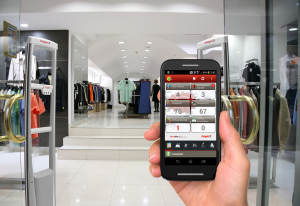 I’m seeing a huge spike in return fraud, so I’m betting you are too. For my particular stores, it is a huge problem. I will venture to say that it is the biggest and most financially impactful fraud scheme that is affecting my stores; and it’s only getting bigger. I’m fortunate enough to have a small team within our LP department that do nothing but review returns data. When they see something that is indicative of fraud, we actually cancel the store credits unless proof of purchase can be verified. We are poised to break 5 million dollars in suspended store credits this year. Insane.
I’m seeing a huge spike in return fraud, so I’m betting you are too. For my particular stores, it is a huge problem. I will venture to say that it is the biggest and most financially impactful fraud scheme that is affecting my stores; and it’s only getting bigger. I’m fortunate enough to have a small team within our LP department that do nothing but review returns data. When they see something that is indicative of fraud, we actually cancel the store credits unless proof of purchase can be verified. We are poised to break 5 million dollars in suspended store credits this year. Insane.
My company only operates a little over two hundred stores, so that number is quite high. That is 5 million dollars in external theft that we recovered. I have my own theories on why this is a growing problem and a few solutions that any retailer can adopt to help limit your exposure to this madness. Would you believe me if I told you that most return fraud can be prevented with a simple “hello”?
Customer service is the most proven and effective way at deterring criminal activity in your store. A simple greeting, acknowledgment and/or engaged employees can, and will stop most would-be thieves. If your employees are engaging with all of your customers, this will prevent the theft from ever happening. If there is no theft of product, then there can be no refund of stolen goods. See where I’m going with this?
Every store that I visit and audit that I conduct, it seems as if I’m noting some challenges in the customer service department. Do you really think that your product is that great and your prices that low, that the customer absolutely must purchase their item at your store? If you think this, then I hate to be the one to tell you this, but you’re wrong. Customer’s come to your stores for more than just an item; they want to feel as if they are appreciated. It’s your job to make that happen. Likewise, by providing exceptional service, you are not only increasing your sales, you are reducing shrink.
Here’s a case study to help drive home my point:
Susie G is a thief. She’s only hooked on heroin and needs a daily fix. She’s unemployed so she resorts to stealing to fuel her drug addiction. She’s learned from some of her buddies that “Store X” doesn’t have strong controls and it’s super easy to steal from them. Even better, you can come back later and return the stolen merchandise and they’ll give you a gift card. (How nice!) She learns that she can easily sell that gift card for quick cash in the parking lot, or at a local pawn shop. Thus, a small criminal enterprise is born. Susie then tells all of her heroin addicted brethren and before long, groups of 5 and 6 are targeting your store and committing return fraud on a daily basis.
Why did Susie and her friends find it so easy to steal from you and not the store down the road?
I’m not going to put an answer here. I want you, managers and owners to stop for 10 minutes and really think about this question. What can you do to prevent this in your store? Can you up your customer service game? The answers may surprise you.
 The holidays are over and all over the country retail personnel are saying, “I can’t do that again. I’ve got to get out of retail.” Some of them are, understandably, experiencing a momentary stress or anxiety reaction. After they’ve had some time to de-stress they’ll bounce back and want to stay in the field.
The holidays are over and all over the country retail personnel are saying, “I can’t do that again. I’ve got to get out of retail.” Some of them are, understandably, experiencing a momentary stress or anxiety reaction. After they’ve had some time to de-stress they’ll bounce back and want to stay in the field. The holidays are over and looking at your sales, revenue, expenses, profits and inventory, you are probably realizing you had a good year, or a year where inventory has disappeared and don’t know where it went.
The holidays are over and looking at your sales, revenue, expenses, profits and inventory, you are probably realizing you had a good year, or a year where inventory has disappeared and don’t know where it went.





